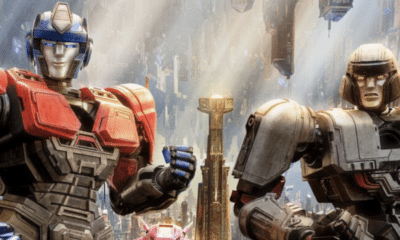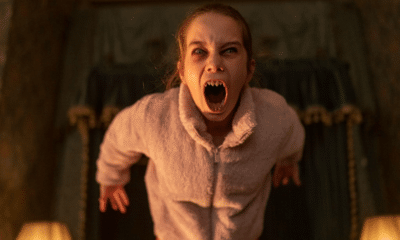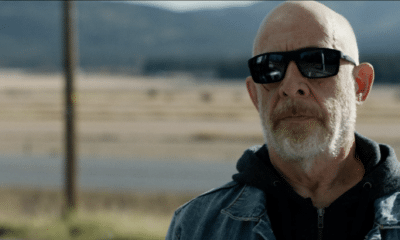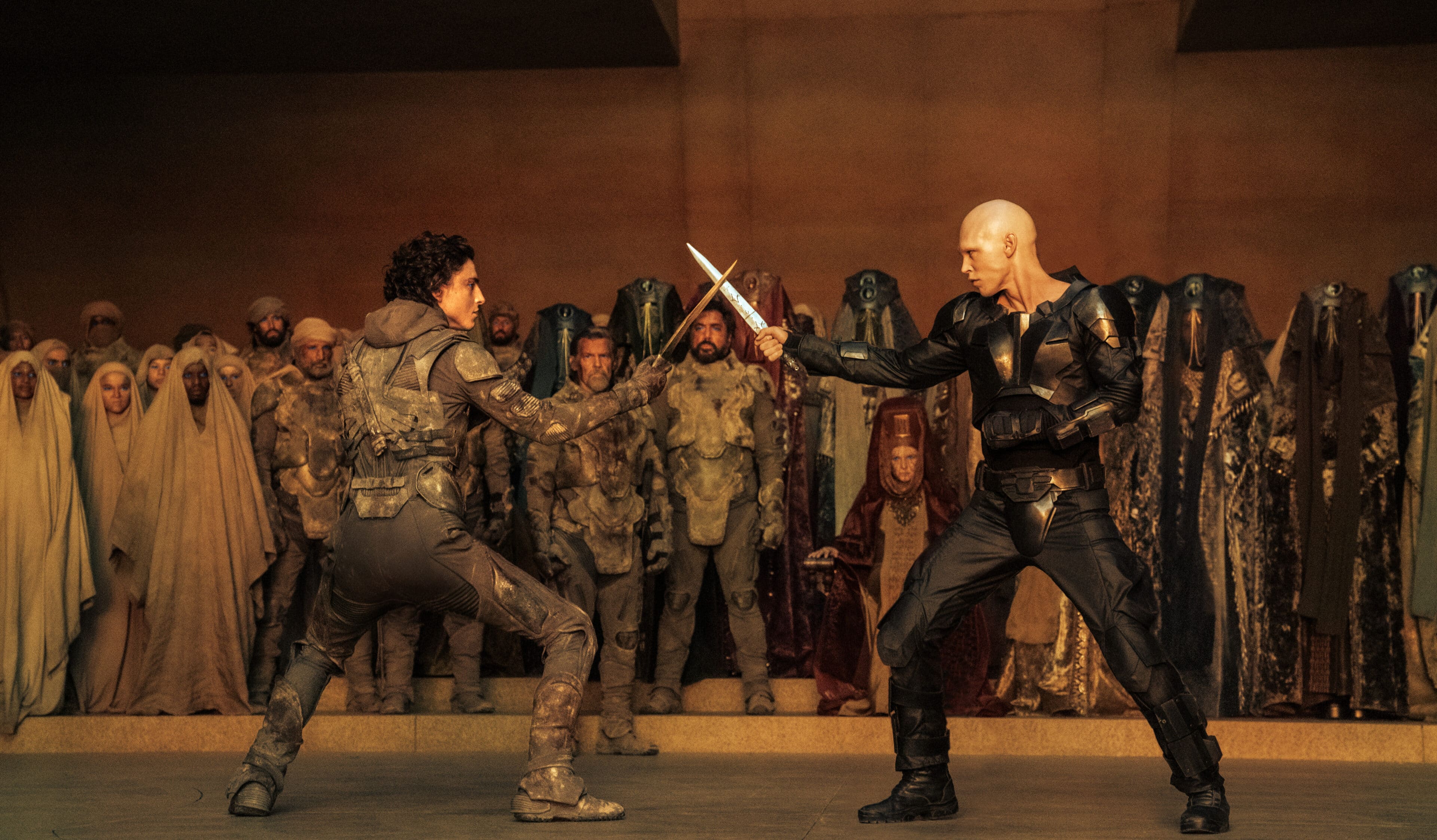Directed by Roger Allers and Rob Minkoff
1994/88 minutes
Perhaps the most successful movie of the Disney Animated Classics, THE LION KING began its journey to the screen in 1988, during a promotional sojourn for OLIVER AND COMPANY. The notion of a story set in Africa immediately grabbed the attention of then CEO Jeffrey Katzenberg, who expanded the story into a coming of age drama, drawing from his own life experiences. The original story was a considerably different beast, centring on the battle between lions and baboons, where Scar being the baboon leader, and Simba becoming a lazy, slovenly character due to Scar’s machinations. While some of that version made it into the final film, it took several years and rewrites to get everything down right, with the writers working with the directing team from BEAUTY AND THE BEAST for the final version of the script.
Production started at the same time as POCAHONTAS, which most of the Feature Animation staff chose to work on instead, thinking it would be the more successful of the two. Don Hahn said of the film:
“THE LION KING was considered a little movie because we were going to take some risks. The pitch for the story was a lion cub gets framed for murder by his uncle set to the music of Elton John. People said, ‘What? Good luck with that.’ But for some reason, the people who ended up on the movie were highly passionate about it and motivated.”
THE LION KING came to be regarded as “The B Movie” to POCAHONTAS’ A, with many of its leading animators having little experience or interest with animal characters, and as production progressed, the animators studied real-life animals and consulted various experts, as had been done for BAMBI half a century earlier. Use of computer animation aided considerably in the process, most notably in the stampede sequence, where a handful of distinct wildebeest were created digitally, before being duplicated-duplicated-duplicated-duplicated! in their hundreds, cell-shaded and programmed on randomised paths. Five specialist animators worked for over two years.
The Disney folk were surprised when an early trailer for THE LION KING – consisting solely of the opening sequence – suggested the film may actually have been a success, and while its “sister” title POCAHONTAS was also a commercial success one year later, THE LION KING earned double box office takings on its initial release, overshadowing POCAHONTAS, and pretty much every other Disney film before or since.
SYNOPSIS: As the sun rises, the “people” of the Pride Lands gather to celebrate the birth of the new Lion Prince, Simba, and all are overjoyed, except for Scar, the King’s brother. With the arrival of the new cub, he’s no longer the heir apparent. Allying himself with a pack of Hyenas, Scar arranges the death of the Lion King, Mufasa, and pin the blame on Simba. Fleeing the kingdom, Simba is hounded by Scar’s Hyena lieutenants, but they lose him in a forest of thorns. The kingdom mourns the deaths of Mufasa and Simba, and as he somberly accepts the throne, Scar unveils his vision of a new era, with Lion and Hyena living together for the good of all.
Simba is found and adopted by a pair of likewise exiled misfits, snarky meerkat Timon and flatulent warthog Pumbaa, who raise the boy to adulthood with their devil-may-care, no-worries lifestyle. Two years pass, and Simba saves Pumbaa from an attacking lioness, only to realise it’s his childhood friend (and fiancée!) Nala. Nala reveals to Simba that she left Pride Rock to survive; the kingdom has fallen into ruin, still under the tyrannical rule of Scar.
Still wracked with guilt over his father’s death – unaware it wasn’t his fault as Scar led him to believe – Simba refuses Nala’s pleas to return home, whilst consummating their betrothal. It’s only after the arrival of the simian wiseman Rafiki, and a vision of his late father that Simba realises his destiny, and returns to face Scar, followed by Nala, Timon and Pumbaa.
As they battle, Scar taunts Simba over his father’s death. While Simba is younger and stronger, Scar is the more experienced and cunning. As Scar is about to deal the final blow, he reveals the truth. “I killed Mufasa.” Enraged, Simba gains the upper hand, forcing Scar to reveal the truth to the Pride.
As his allies battle the Hyenas below, Scar is cornered by Simba, and pleads for his life, pinning the scheme on the Hyenas. Simba refuses to believe his treacherous uncle, but spares his life on the condition that he run away and never return, the same words Scar said when Simba fled the Kingdom. Scar feigns obsequiousness before attacking Simba once again. After another fierce bout, Scar is cast out of Pride Rock, and killed by his allies, who overheard his attempt to betray them.
With Scar dead and the Hyenas cast out, the rains begin to fall once more, and Simba takes his place as the Lion King. Sometime later, when Pride Rock is restored, the kingdom celebrates the birth of Simba’s child, as the “circle of life” continues.
LESSONS LEARNED:
1. All life is connected; your actions affect the world in ways you can’t always see.
2. You can’t run from your demons forever; one day, you will have to face them.
3. You really can make Shakespeare work anywhere.
THE HEROES
![]()
![]()
While he should lose a few points for being irresponsible, reckless and apathetic, Simba kind of makes up for it by facing his demons, both emotional and physical, head on. Voiced by Jonathan Taylor Thomas as a child, he’s very much a child prince; the centre of his own little universe, eager to learn more about the world he’s destined to rule, singing of his impatience to become King. He’s an adventurous and boisterous little tyke, barely kept in check by the people around him as he charges headlong into danger, desperate to be seen to be as brave as his father and hero, Mufasa.
Voiced by James Earl Jones, Mufasa is an archetypal leader; strong of mind and body, he’s seen to be respected and loved by all bar Scar and his followers, but has the strength to keep his younger brother in check, leaving Scar to resort to subterfuge to o’erleap Simba. In the short time he’s seen, Mufasa is shown to be the hero Simba will forever aspire to be. It’s a truly heartbreaking moment when Simba tries to wake him, not quite understanding the true tragedy until Scar moves in to twist the knife some more.
After your standard musical montage, Simba matures into a fine specimen of the species, voiced by Matthew Broderick, which is surprising seeing as it’s implied that he only ate insects during his time with Timon and Pumbaa. In any case, Simba basically grows up to be a slacker, chilling out with his friends all day and not caring about the world beyond his vision, constrained as it is by his attitude and Bon Jovi hairstyle. But after a little soul-searching and a minor concussion, Simba does the right thing, accepting responsibility for his actions, past and future.
THE HEROINE
![]()
There are few named female characters, even amongst a pride of lions where females make up most of the population, and Nala is the only one that takes an active role. Voiced by Naketa Calame as a cub, Nala is betrothed to Simba from childhood, much like Aurora to Phillip. The key difference here is that Nala is very much more on the ball than Simba, frequently pinning him in playfights and having the upper hand, even as they both mature to adulthood.
Moira Kelly’s Nala is a very quiet, but fierce individual, leaving her homeland (unusual behaviour for a lioness in the real world, but this is a Disney film) to escape hunger – and, according to some versions, Scar’s romantic advances – and find aid for the dying Pride Lands. Despite their love – perhaps Nala realised her true feelings for him after hearing of his apparent demise – Nala is rightly angered by Simba’s disaffection from his duties, and leaves him even after a romantic night together. Once Rafiki has announced, “The King has returned”, Nala wastes no time in joining the fight, winning the war for Pride Rock while Simba wins the fight with Scar.
THE VILLAIN
![]()
Ah, Scar. Voiced by Jeremy Irons, the prince once known as Taka is a most Shakespearean beast, and not just because of his voice actor. Aside from the comparison to Hamlet’s Claudius (brother to the King who murders his way to power and takes his brother’s consort), there’s a good deal of Macbeth in Scar as well, not least in his handling of the Hyenas as his lieutenants and assassins. There’s a nice parable to Banquo’s Ghost when Simba returns, as Scar mistakes him for Mufasa and recoils in fear, and as his grip on power begins to waver, so too does his grip on his own sanity (having said that, having hung around Zazu for a couple of years might do that to you).
Like many Disney villains, one of Scar’s greatest weaknesses is his hubris, and perhaps his narcissistic tendencies, as well as his delusions of grandeur; he believes himself to be the better of his brother, despite his implied physical weakness, and puts his Machiavellian mind to work to redress that balance.
Aside from all this psychology, Scar is a truly great Disney villain because he’s also remarkably funny, in a black kind of way, without resorting to the comic pratfalls of Captain Hook. His sardonic, subtly cynical and sarcastic sense of humour is a highlight, and no one, not even himself, is safe from it.
HIS FATE: Perhaps the most graphic of any Disney villain; after being cast down from Pride Rock, a firestorm raging around him, the Hyenas emerge from the shadows; having heard Scar’s attempts to sell them out, they swarm around him, and tear him apart.
SIDEKICKS AND HENCHMEN
![]()
![]()
Since I’ve listed Mufasa as a Hero, I suppose Zazu may qualify as his sidekick. Acting as the king’s aide and messenger, Zazu is very much in the same league as Cogsworth; tightly-wound, dignified and proper, just beneath the surface he’s a complete wreck, having to deal with not only the comings and goings of the kingdom, but the antics of Simba and Nala. Voiced by Rowan Atkinson, Zazu does tend to panic in emergencies, and he possess a rather dark sense of humour, suggesting to Mufasa that Scar would “make a rather nice throw rug… And just think, whenever he gets dirty you can take him out and beat him”.
While Scar is shown to be at the head of an army of Hyenas, three rise above their ranks and seem to serve as his agents. I could write an entire article about them (don’t worry, I won’t… well, maybe some other time) but its safe to say there’re more going on with the three of them than first glanced;
- Shenzi, voiced by Whoopi Goldberg, is never said to be but is likely the matriarch of the clan, since Hyenas are a matriarchal species. It’s implied that she’s only working with Scar because he can offer her clan a power base, and wastes no time in disposing of him when the opportunity arrives.
- Banzai, voice of Cheech Marin (Interesting Interlude: Shenzi was originally male, and was to be voiced by Marin’s longtime comedy partner Tommy Chong, but the two had apparently fallen out and Goldberg was cast in his place) follows DeSoto’s lead by being the far more aggressive of the three, as well as the most outspoken – his tendency to speak without thinking costs him several times during the film.
- Ed, vocalised by Jim Cummings, is on the surface nothing but a grinning loon, but under the insane exterior, it’s shown that he’s on par, if not a little ahead of Banzai or even Shenzi; he’s seen to be involved, if not verbally active in the trio’s discussions and activities, and is quick to notice Scar’s attempt at treachery.
The three of them are considerably more developed characters than many Disney henchmen, and even if they are pawns in Scar’s long game, they seem to have their own strategy in mind.
Now, Timon and Pumbaa. I’ve put them off because for one thing I can’t stand them half the time, and for another, I’m not sure they count as Simba’s sidekicks. They follow him in the final act and become his subjects (and his child’s caretakers), but they’re very much on equal terms.
Rather, Timon and Pumbaa (voiced by Nathan Lane and Ernie Sabella) almost become Simba’s adoptive parents, and while he spends much of his formative years as a teenage slacker, Simba does turn out alright in the end.
Both of them come across as rather thick, and sometimes they seem to be there only for a cheap laugh, but you know, Disney movie tropes and all that.
PLOT
![]()
While it is the first Disney feature not based on an existing book or fairy tale, THE LION KING borrows heavily from Shakespeare’s Hamlet and Macbeth and throws in a little of the Old Testament for good measure.
In a nutshell, it’s basically Hamlet with fewer deaths; a young prince’s father is murdered by his uncle, who takes the throne while the prince flees the land, only to return to retake the kingdom and kill his treacherous uncle.
However, THE LION KING makes good use of these ingredients, mixing them with a solid cast and score to make one of the most successful animated movies of all time, second only to Pixar’s TOY STORY 3 in terms of worldwide gross.
WARNING: POTENTIAL CONTROVERSY AHEAD!
There are some that see racist and anti-immigration undertones in the plot, interpreting the dark-furred Hyenas – voiced by black and Latino voice actors, living in dark, impoverished areas and threatening children- to represent ethnic minorities while the Pride Lands, ruled over by light-furred Lions speaking with neutral American accents, represent White America…yeah.
A more concrete complaint was made against the portrayal of the Hyenas as being dim-witted, disenfranchised and subservient to the Lions, when in fact, often the reverse is true; hyenas are proficient predators, and often lions resort to scavenging from them.
LAUGHS
![]()
Like many films of the Renaissance Era, THE LION KING manages to find a good balance between comedy and tragedy, and with perhaps the exception of Scar, the comedy is left mainly to the supporting cast, most notably the Laurel-and-Hardy-esque antics of Timon and Pumbaa, who, much like the Genie, provide a source of humour outside the main narrative, even threatening to break the fourth wall on occasion while making the odd modern cultural reference (though not nearly as many as the Genie). It’s fair to say they get the, ahem, lion’s share of the comedy…
I’ve talked about Scar being a source of dry humour, and most of that is in his interactions with his castmates, notably Zazu and the Hyenas, who also get a couple of great comic scenes.
SCARES
![]()
By contrast, the Hyenas are also the source of some of the most suspenseful and, yes, scary moments of the movie. For all their banter and comic styling, they are ruthless and vicious, and its only Mufasa’s intervention that saves the cubs from their fate. They also provide some of the biggest chills of the film, not just as part of the Nazi imagery-filled “Be Prepared” sequence, but also with Scar’s demise.
MUSIC/ SONGS
![]()
The score, composed by Hans Zimmer, is arguably one of the best of any Disney film, perhaps of any film, and the biggest-selling soundtrack of any animated film. Hired for his experience with films with African settings, Zimmer supplemented his score with traditional African music and choir elements, arranged by South African singer and composer Lebohang “Lebo M” Morake, and is some of his finest work, right up there with GLADIATOR, THUNDERBIRDS and upteen Chris Nolan movies.
The songs, written by ALADDIN alumnus Tim Rice and Elton John, range from the sublimely sinister song of Scar, “Be Prepared”, to the innocent, upbeat and joyous “I Just Can’t Wait To Be King”, to the overbearing, obligatory love song, “Can You Feel The Love Tonight”, which is forced on us again over the end credits. Apparently, Elton kicked up quite a fuss when he found out his love ballad was originally to be sung by Timon and Pumbaa, and lobbied (successfully, unfortunately) for it to be sung “properly”. In any case it’s not one of my favourite Disney songs, and probably my least favourite in the film, but what’s really interesting for me is that backing vocals were provided by Robert Englund…
Yes, that Robert Englund.
LEGACY
![]()
![]()
Not surprisingly, given its success, THE LION KING has done rather well, with countless books and stories – some of which were made outside of Disney, making their canonicity rather questionable – filling in some of the blanks and expanding the world, notably the histories of Mufasa and Taka, and how the latter came to be known as “Scar”.
Timon and Pumbaa got their own show, shown between 1995-99, running for three seasons and 85 episodes and earning a number of Daytime Emmy Awards. It follows the duo’s adventures after the film, but breaks out of the narrative constraints by having them travel the world in some episodes.
THE LION KING II: SIMBA’S PRIDE (a surprisingly intelligent title, considering) followed in 1998, and reunited most of the cast for a new story beginning where the first left off; Simba’s daughter, Kiara, clashes with her father over her affections for Kovu, a member of the Outsiders, Scar’s followers exiled from the Pride Lands, whilst Kovu’s mother Zira plots to avenge Scar. It received mixed reviews, mostly noting its inferior soundtrack. (though I personally think Zira’s number, “That’s My Lullaby” is one of my favourite Disney songs, right alongside “Be Prepared”).
While SIMBA’S PRIDE is effectively Romeo and Juliet (without the suicides), THE LION KING 1 ½ (or III: HAKUNA MATATA) takes its cues from Rosencrantz and Guildenstern Are Dead. At once a prequel and a parallel to the main film, it focuses on Timon and Pumbaa’s own origins, before going on to basically retell the original film from their point of view, and it did surprisingly well, earning a number of awards and critical approval. It also made more meat of Timon’s “adoption” of Simba.
As well as being the basis of numerous computer games and a recurring appearance in KINGDOM HEARTS, perhaps THE LION KING’S most notable legacy is its stage adaptation, which has run continuously around the world since its debut in 1997 and won a slew of awards. It expands the story – notably Nala’s own subplot – and introduces many new songs and musical pieces, including a couple cut from the original cinema release. It also ranked number one at the box office all over again when it was re-released with a 3D conversion in 2011. It was meant to be the first of a wave of 3D re-releases, but after BEAUTY AND THE BEAST, FINDING NEMO and MONSTERS, INC failed to meet expectations, the re-release of THE LITTLE MERMAID was cancelled, and the project shelved.
FINAL SCORE: 47
NEXT TIME: POCAHONTAS

Latest Posts
-


Film Trailers
/ 1 day agoM. Night Shyamalan’s ‘Trap’ trailer lands
Anew experience in the world of M. Night Shyamalan.
By Paul Heath -


Film News
/ 2 days agoFirst ‘Transformers One’ teaser trailer debuts IN SPACE!
The animated feature film is heading to cinemas this September.
By Paul Heath -


Film Reviews
/ 2 days ago‘Abigail’ review: Dirs. Matt Bettinelli-Olpin & Tyler Gillett (2024)
Matt Bettinelli-Olpin and Tyler Gillett direct this new horror/ heist hybrid.
By Awais Irfan -


Film Trailers
/ 2 days agoNew trailer for J.K. Simmons-led ‘You Can’t Run Forever’
A trailer has dropped for You Can’t Run Forever, a new thriller led by...
By Paul Heath















